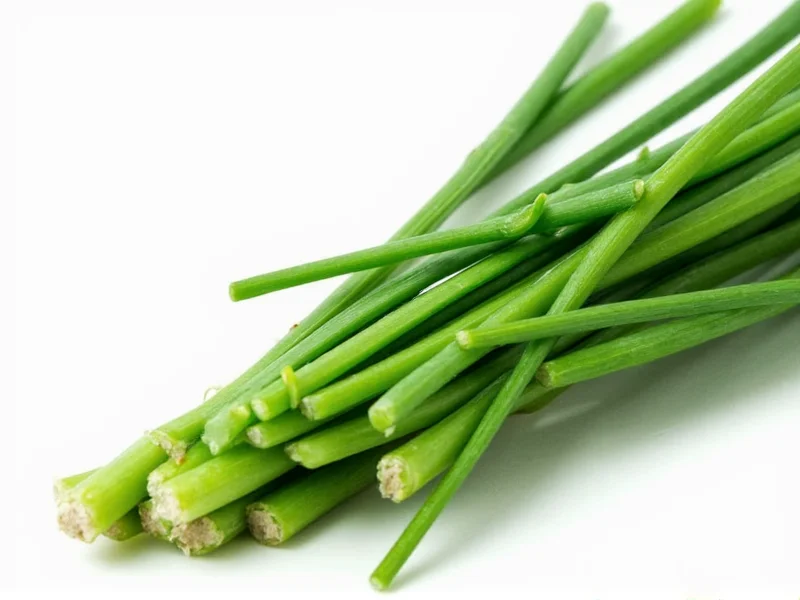Understanding the precise flavor profile of chives is essential for home cooks and culinary enthusiasts looking to elevate their dishes with the right herb. Unlike their more pungent allium relatives, chives offer a refined onion essence that enhances rather than overwhelms. This distinctive characteristic makes them particularly valuable in recipes where a subtle aromatic touch is needed without the sharp bite of mature onions.
The Distinctive Flavor Profile of Chives
Chives (Allium schoenoprasum) represent the most delicate member of the allium family, which includes onions, garlic, leeks, and shallots. Their flavor can be best described as a refined, subtle onion essence with faint garlic undertones. The white bulb base contains slightly more concentrated flavor than the hollow green stems, but both parts maintain that signature mildness that defines this herb.
When tasted raw—which is how chives are almost always used—the initial impression is a fresh, grassy note followed by a gentle onion flavor that develops slowly on the palate. Unlike regular onions that deliver an immediate sharpness, chives provide a gradual, nuanced flavor experience that never becomes overpowering. This mildness allows them to complement rather than dominate other ingredients in a dish.
Chives Compared to Other Alliums
Understanding how chives taste requires comparison with their allium relatives. The following table illustrates key flavor differences among common allium varieties:
| Allium Variety | Flavor Intensity | Primary Flavor Notes | Best Culinary Applications |
|---|---|---|---|
| Chives | Mild (1/10) | Delicate onion, subtle garlic, fresh grass | Raw garnishes, creamy sauces, egg dishes, potato toppings |
| Green Onions/Scallions | Moderate (4/10) | Sharp onion (white part), mild onion (green part) | Stir-fries, salads, garnishes, cooked dishes |
| Regular Onions | Strong (7-9/10) | Pungent, sharp, sweet when cooked | Sautéing, roasting, caramelizing, raw in salsas |
| Garlic | Very Strong (8-10/10) | Pungent, spicy, aromatic | Cooking base, roasted, minced in sauces |
| Shallots | Moderate-Strong (5-7/10) | Sweet, mild onion with garlic notes | Vinaigrettes, sauces, roasting, delicate dishes |
Factors That Influence Chive Flavor
Several elements affect how chives taste in your dishes:
- Freshness: Freshly harvested chives have the most vibrant flavor. As they age, their taste diminishes significantly.
- Seasonality: Spring-harvested chives typically offer the most delicate flavor, while summer chives can develop slightly stronger notes.
- Growing conditions: Soil quality, sunlight exposure, and watering practices impact flavor intensity.
- Cutting technique: Using a sharp knife rather than tearing preserves flavor compounds better.
- Temperature exposure: Heat diminishes chive flavor rapidly, which is why they're best added at the end of cooking.
Culinary Applications Based on Flavor Profile
The mild onion flavor of chives makes them exceptionally versatile in the kitchen. Professional chefs value chives specifically for their ability to provide onion essence without overwhelming other ingredients. This characteristic answers the common question about what flavor do chives add to dishes—they contribute a refined aromatic quality that enhances rather than dominates.
Consider these optimal uses for chives based on their distinctive taste:
- Raw applications: Sprinkle finely chopped chives over finished dishes like soups, salads, or baked potatoes to preserve their delicate flavor.
- Creamy preparations: Blend into sour cream, cream cheese, or yogurt-based dips where their mild onion flavor complements without overpowering.
- Egg dishes: Incorporate into omelets, frittatas, or scrambled eggs where their gentle flavor enhances without competing with other ingredients.
- Seafood pairings: Use as garnish for fish or seafood dishes where strong onion flavors would be inappropriate.
- Butter infusions: Create chive butter for breads or vegetables that benefits from subtle onion notes.
Common Flavor Misconceptions
Many home cooks mistakenly believe chives taste identical to green onions or regular onions. Understanding chives vs green onions taste difference is crucial for proper culinary application. While both belong to the allium family, chives offer approximately one-tenth the intensity of white onions and about one-quarter the strength of green onions.
Another frequent misconception involves cooking with chives. Unlike onions that develop sweetness when cooked, chives lose their distinctive flavor rapidly with heat exposure. This explains why culinary professionals almost always add chives as a finishing element rather than cooking them extensively.
Maximizing Chive Flavor in Your Cooking
To get the most from chives' delicate flavor profile, follow these evidence-based recommendations:
- Store chives properly in a slightly damp paper towel inside a sealed container in the refrigerator
- Use within 3-5 days of purchase for optimal flavor
- Chop immediately before use with a sharp knife to preserve volatile flavor compounds
- Add to dishes in the final minute of cooking or as a garnish
- Pair with complementary flavors like dill, parsley, lemon, or mild cheeses
- Avoid vinegar-based preparations that can overpower chive flavor
When substituting chives in recipes, remember that are chives stronger than onions is the wrong question—chives are significantly milder. For substitution, use approximately three times the amount of chives to match the flavor impact of green onions, and about ten times to approximate white onion intensity.











 浙公网安备
33010002000092号
浙公网安备
33010002000092号 浙B2-20120091-4
浙B2-20120091-4